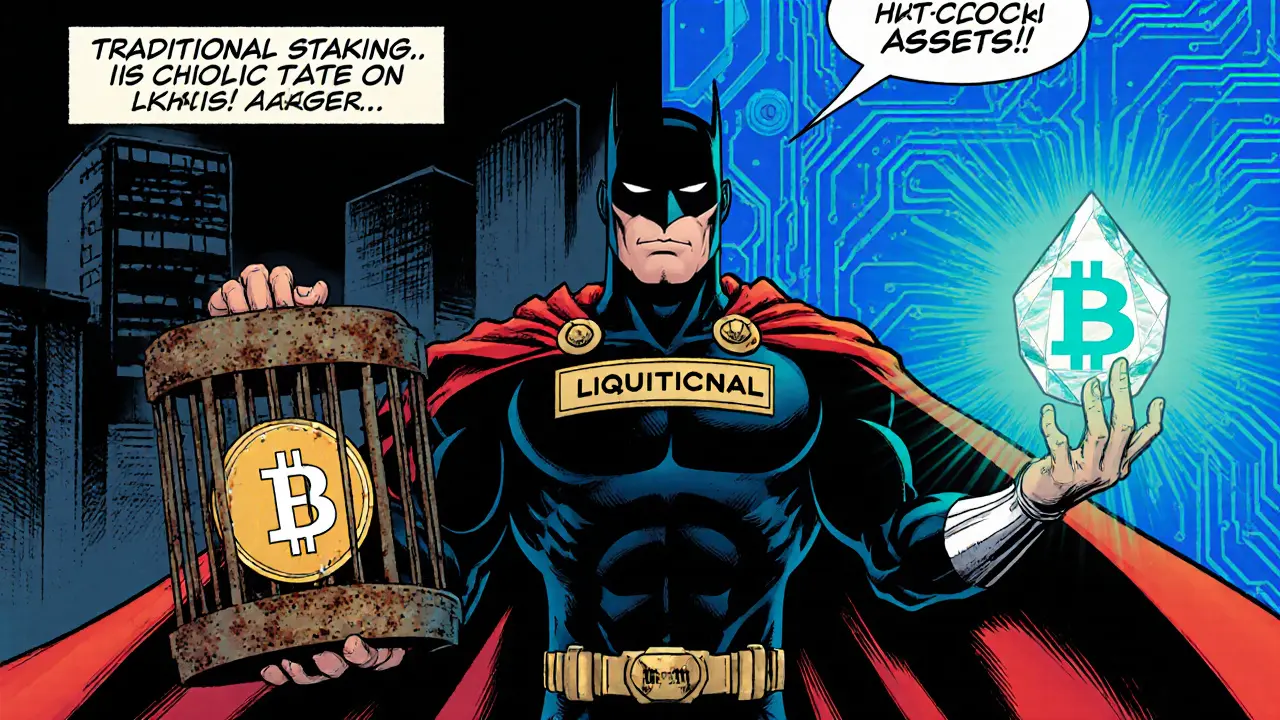Why Liquid Staking Beats Traditional Staking: Top Benefits Explained
Explore why liquid staking outperforms traditional staking, covering higher capital efficiency, liquidity benefits, risks, and how to choose the best protocol.
When working with Ethereum, a decentralized, open‑source blockchain that runs programmable smart contracts and uses the native token Ether (ETH). Also known as ETH, it fuels a massive ecosystem of dApps, DeFi platforms, and NFTs. The network’s flexibility comes from Rollups, layer‑2 solutions that batch many transactions off‑chain and settle a concise proof on the main chain. Sometimes called Layer 2 aggregators, rollups cut costs and speed up throughput. Another core piece is Smart contracts, self‑executing code that runs exactly as written without intermediaries, which make decentralized finance and many other use‑cases possible.
DeFi, short for decentralized finance, leans on Ethereum’s ability to host trustless contracts. Lending platforms, automated market makers, and stablecoins all run as smart contracts on the chain, letting users swap assets, earn yield, or borrow without banks. Because the code is open, anyone can audit it, fork it, or build on top of it, which fuels rapid innovation. This openness also means developers must think about security; a single bug can lock up millions, so rigorous testing and audits are standard practice. The vibrant community regularly proposes upgrades via Ethereum Improvement Proposals (EIPs), keeping the protocol adaptable.
Scaling remains the biggest hurdle for widespread adoption. As more users join DeFi, gas fees can skyrocket, turning simple transactions into pricey events. Rollups address this by moving most of the work off‑chain while still inheriting Ethereum’s security guarantees. Optimistic rollups assume transactions are valid and only check them if challenged, whereas ZK‑rollups provide cryptographic proofs that verify every batch instantly. Both approaches aim to push Ethereum’s throughput from ~15 TPS to thousands, edging closer to the 100k TPS vision outlined in recent roadmaps.
Beyond speed, the economics of Ether shape user behavior. Gas fees are paid in ETH, so when the network is busy, users compete by offering higher fees to miners—or, now, validators in the proof‑of‑stake era. This market‑driven pricing incentivizes validators to secure the chain while also encouraging developers to write efficient contracts. Some projects mitigate costs by using layer‑2 bridges, letting users deposit ETH once and transact cheaply thereafter. Understanding these dynamics helps traders and developers decide when to move to rollups or stay on the base layer.
The Ethereum Virtual Machine (EVM) is the runtime that executes smart contracts. Because it’s a well‑defined bytecode environment, many other blockchains have adopted EVM compatibility, letting developers port code with minimal changes. This interoperability creates a broader ecosystem where tools, wallets, and libraries serve multiple chains, amplifying Ethereum’s influence. Moreover, the EVM’s deterministic nature simplifies security analysis, allowing formal verification tools to prove contract correctness before deployment.
Governance on Ethereum is a blend of on‑chain mechanisms and off‑chain community discussions. Core developers, researchers, and token holders collaborate on proposals, using forums, GitHub, and social media to reach consensus. Once an EIP gains enough support, it may be bundled into a network upgrade, like the recent “Shanghai” hard fork that unlocked staking withdrawals. This collaborative model ensures the protocol evolves while preserving decentralization.
Below you’ll find a hand‑picked collection of articles that dive deeper into these topics. From detailed rollup breakdowns and DeFi strategies to compliance insights and upcoming airdrop guides, the posts cover the full spectrum of what’s happening on and around Ethereum today. Explore the list to sharpen your knowledge, spot new opportunities, and stay ahead in the fast‑moving crypto space.

Explore why liquid staking outperforms traditional staking, covering higher capital efficiency, liquidity benefits, risks, and how to choose the best protocol.

Explore how MEV, front-running, backrunning, and sandwich attacks extract value on blockchain, their economic impact, mitigation tools like Flashbots, and what regulators might do.